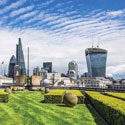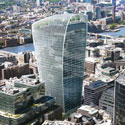Filter by
You must be a CTBUH Member to view this resource.
One Blackfriars
The Boomerang, Beetham Tower
Building
Completed, 2019
SE1 9GD
residential
concrete
166.3 m / 546 ft
50
3
274
125
3
4 m/s
50,081 m² / 539,067 ft²
You must be a CTBUH Member to view this resource.
You must be a CTBUH Member to view this resource.
The main contractor is the supervisory contractor of all construction work on a project, management of sub-contractors and vendors, etc. May be referred to as "Construction Manager," however, for consistency CTBUH uses the term "Main Contractor" exclusively.
Other Consultant refers to other organizations which provided significant consultation services for a building project (e.g. wind consultants, environmental consultants, fire and life safety consultants, etc).
These are firms that consult on the design of a building's façade. May often be referred to as "Cladding," "Envelope," "Exterior Wall," or "Curtain Wall" Consultant, however, for consistency CTBUH uses the term "Façade Consultant" exclusively.
Material Supplier refers to organizations which supplied significant systems/materials for a building project (e.g. elevator suppliers, facade suppliers, etc).
You must be a CTBUH Member to view this resource.
Usually involved in the front end design, with a "typical" condition being that of a leadership role through either Schematic Design or Design Development, and then a monitoring role through the CD and CA phases.
The Design Engineer is usually involved in the front end design, typically taking the leadership role in the Schematic Design and Design Development, and then a monitoring role through the CD and CA phases.
The Design Engineer is usually involved in the front end design, typically taking the leadership role in the Schematic Design and Design Development, and then a monitoring role through the CD and CA phases.
The main contractor is the supervisory contractor of all construction work on a project, management of sub-contractors and vendors, etc. May be referred to as "Construction Manager," however, for consistency CTBUH uses the term "Main Contractor" exclusively.
Other Consultant refers to other organizations which provided significant consultation services for a building project (e.g. wind consultants, environmental consultants, fire and life safety consultants, etc).
These are firms that consult on the design of a building's façade. May often be referred to as "Cladding," "Envelope," "Exterior Wall," or "Curtain Wall" Consultant, however, for consistency CTBUH uses the term "Façade Consultant" exclusively.
Material Supplier refers to organizations which supplied significant systems/materials for a building project (e.g. elevator suppliers, facade suppliers, etc).

12 June 2013 | London
Ian Simpson of Ian Simpson Architects is interviewed by Jeff Herzer during the 2013 CTBUH London Conference at The Brewery, London. Ian talks about 1...

26 October 2015
The Promise of Public Realm: Urban Spaces in the Skyscraper City
Stephan Reinke, Stephan Reinke Architects
This paper will reveal the importance of integrating the Ground Plane, Mid-Level and Rooftop Urban Public Spaces in the City. We will explore the NYLON...

12 June 2013 | London
Ian Simpson of Ian Simpson Architects is interviewed by Jeff Herzer during the 2013 CTBUH London Conference at The Brewery, London. Ian talks about 1...

12 June 2013 | London
London and Beyond: Regionalism and the British Skyscraper
There are very few architects who have built tall buildings across numerous cities in the UK, and yet several cities outside London have enthusiastically embraced...

11 June 2013 | London
Interview: Heritage and Future of London Tall Buildings
Kamran Moazami of WSP Group is interviewed by Jeff Herzer during the 2013 CTBUH London Conference at The Brewery, London. Kamran discusses the history of...

26 October 2015
The Promise of Public Realm: Urban Spaces in the Skyscraper City
This paper will reveal the importance of integrating the Ground Plane, Mid-Level and Rooftop Urban Public Spaces in the City. We will explore the NYLON...

11 June 2013
The Special Nature of the European Skyscraper
European architecture is at a crossroads. Its commercial and environmental realities are driving buildings ever-higher, but not all are convinced. In this article – contributed...
Subscribe below to receive periodic updates from CTBUH on the latest Tall Building and Urban news and CTBUH initiatives, including our monthly newsletter. Fields with a red asterisk (*) next to them are required.
View our privacy policy